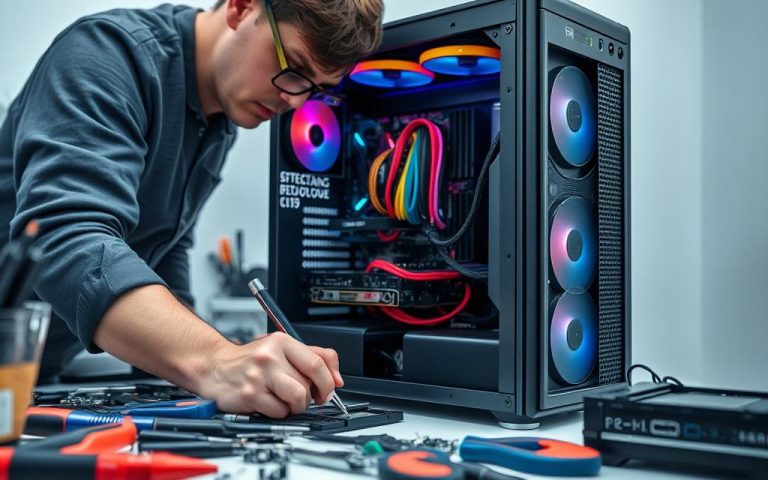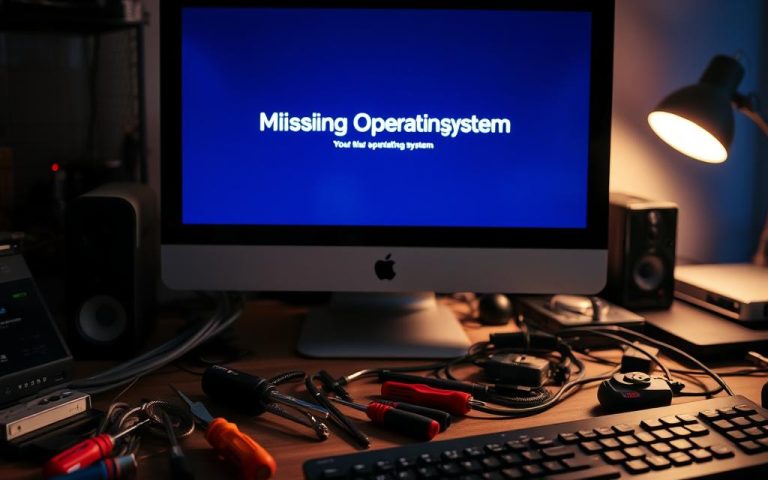Do All Computers Really Need an Operating System?
Understanding the role of operating systems in managing computer resources is key. The history of computers goes back to the Von Neumann architecture. Operating systems have been vital in making computers more flexible and efficient over time.
Early computers were hardwired, but now we have personal computers thanks to operating systems. They allow for program storage and execution, making computers more versatile. The concept of booting and BIOS is essential for starting hardware and running programs.
Operating systems have driven innovation in computing. They enable the exploration of new ideas and features across platforms. We’ll look at how operating system choices affect performance, security, and user experience.
Regular updates, security patches, and antivirus software are important for keeping computers running smoothly and securely. As we explore computer systems, we’ll see how operating systems shape the future of computing.
Understanding the Basic Functions of Operating Systems
Operating systems are key in managing computer hardware and software. They connect computer architecture with user applications, making interaction efficient and secure. To grasp operating systems, we must look at their main functions and parts.
A major part of operating system basics is managing processes. This means giving memory and CPU time to different tasks. It makes sure each task runs smoothly. Also, operating systems handle file systems, creating a structure for files.
- Memory management: allocating and deallocating memory for processes
- Processor management: scheduling processes for CPU execution
- File management: organizing and providing access to files
- Input/Output (I/O) management: handling interactions between devices and processes
In summary, knowing the basics of operating systems is vital. It shows the complexity and importance of computer architecture in today’s computing. By looking into the core parts and functions of operating systems, we can understand computer systems better. This helps us see how they make computing efficient and secure.
The Historical Evolution of Computing Without Operating Systems
The history of computing is a captivating tale that covers many years. In the beginning, computers were massive and didn’t have operating systems. They were designed for specific tasks like calculations and data processing. This laid the groundwork for today’s computers.
The computer evolution was gradual but essential. It was driven by the need for more efficient and powerful machines.
The first operating system, GM-NAA I/O, was developed in 1956. It was for batch processing and started a new computing era. Operating system development continued, with time-sharing systems, multiprogramming, and graphical user interfaces.
- The introduction of the System/360 series by IBM in the 1960s
- The development of Unix in 1971, which revolutionized operating system design
- The introduction of graphical user interfaces in the 1980s, with systems like Apple Macintosh and Microsoft Windows
The computer evolution has been shaped by operating systems. It continues to evolve today. The early computing era may be over, but its impact is seen in today’s computers.
| Year | Development |
|---|---|
| 1956 | GM-NAA I/O, the first operating system |
| 1971 | Unix, a revolutionary operating system |
| 1984 | Apple Macintosh, a graphical user interface |
Do All Computers Have Operating Systems? The Surprising Truth
Exploring the world of computing shows us not all computers need traditional operating systems. Many devices, like traffic lights and microwaves, use embedded systems. These systems are made for specific tasks and don’t need the complexity of a regular operating system.
Embedded systems are found in industrial control, robotics, and more. They use alternative approaches to control computers, like direct interaction with hardware through bare metal programming.
Embedded Systems and Their Unique Nature
Embedded systems are great because they work well without a traditional operating system. They use special software and hardware that work together smoothly.
Modern Computers Without Traditional Operating Systems
There are also modern computers that don’t need traditional operating systems. These devices use alternative approaches like real-time operating systems (RTOS) or firmware-based systems.
Alternative Approaches to Computer Control
Some examples of alternative approaches include:
- Bare metal programming
- Real-time operating systems (RTOS)
- Firmware-based systems
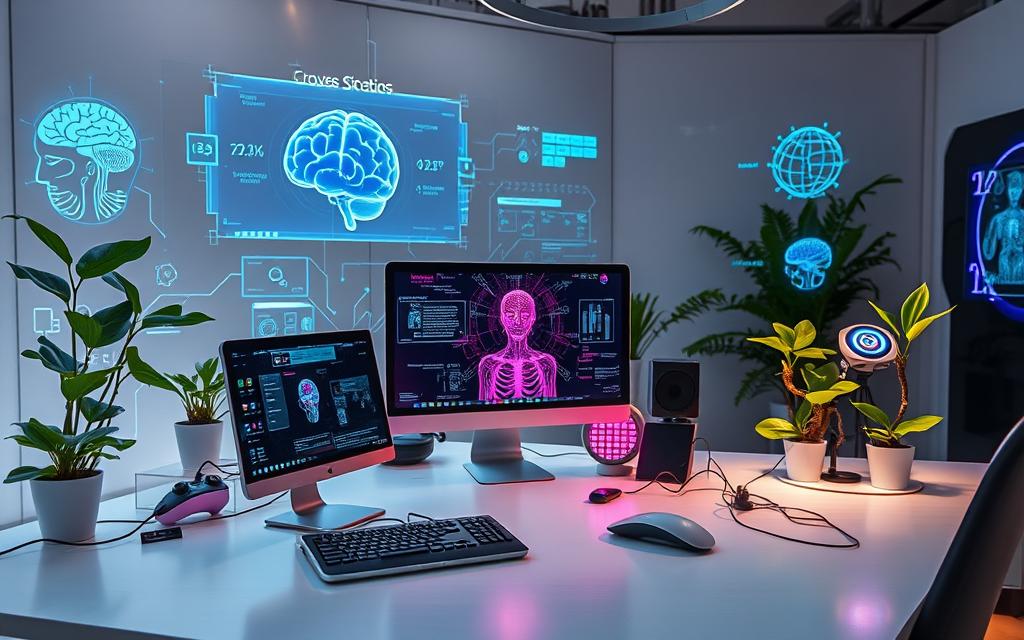
These methods bring many benefits, like better performance and less complexity. As technology evolves, it’s exciting to see how embedded systems and alternative approaches will shape the future.
| System Type | Description |
|---|---|
| Embedded Systems | Designed for specific tasks, do not require traditional operating systems |
| Real-Time Operating Systems (RTOS) | Designed for applications that require precise timing and control |
| Firmware-Based Systems | Use firmware to control hardware components, often used in consumer electronics |
The Rise of Minimalist Computing Solutions
Computers are getting more complex, and we need minimalist computing solutions. This means making computers simpler to work better. With streamlined solutions, people and businesses get more efficient and reliable computers.
Google’s Chrome browser and ChromeOS show how minimalist design works well. Microsoft’s Windows 8 also adopted a simple design. It uses less computer power than older versions.
Minimalist computing has many benefits. It makes training easier, boosts morale, and increases productivity. Fewer apps mean better security and more work done. As more companies use minimalist computing, they’ll see big improvements in their computers.
- Improved performance and efficiency
- Reduced complexity and costs
- Enhanced security and reliability
- Increased productivity and employee morale
By choosing streamlined solutions and a minimalist computing approach, we all benefit. We get more efficient and reliable computers.
| Benefits | Description |
|---|---|
| Improved Performance | Minimalist computing solutions can improve system performance and efficiency. |
| Reduced Complexity | Streamlined solutions can reduce complexity and costs associated with computing systems. |
| Enhanced Security | Minimalist computing can enhance security and reliability by reducing the number of possible vulnerabilities. |
Understanding Bare Metal Programming
Bare metal programming means direct hardware interaction. It lets developers work directly with computer hardware. This way, software interacts directly with the hardware.
This method boosts performance. Without an operating system, a computer can handle more tasks. It processes information much faster, ideal for tasks needing precise timing.
Advantages of Bare Metal Programming
- Improved performance due to direct hardware interaction
- Increased security, as bare metal servers are less vulnerable to security breaches
- Customized solutions for platforms with very limited resources
In cloud computing, bare metal servers are dedicated to one user. This ensures the user gets the server’s full power. It’s great for testing and development, as it isolates test results from the operating system.
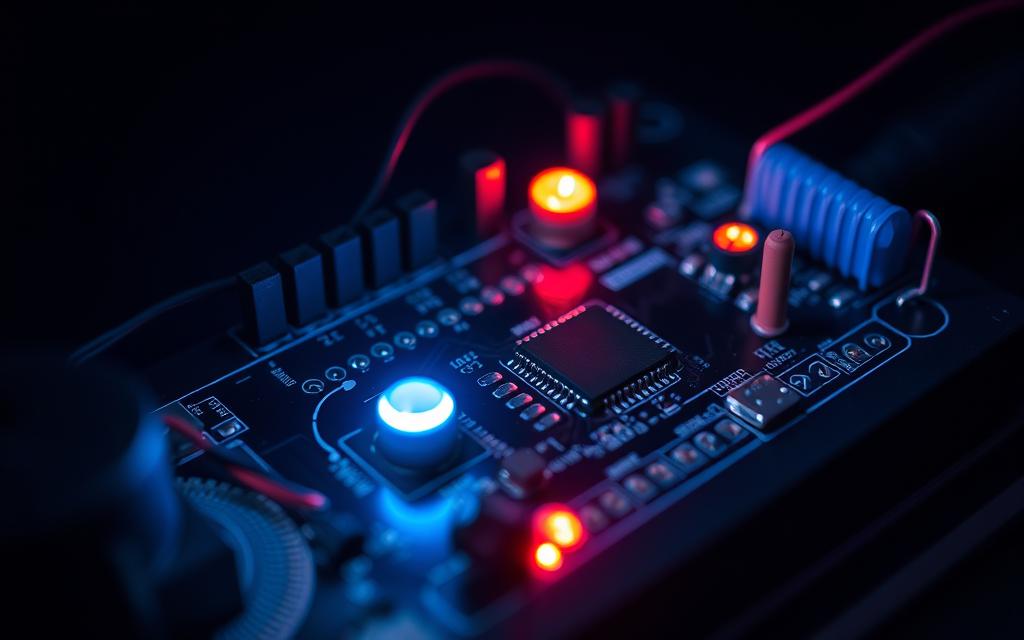
Real-world Applications
Bare metal programming is used in many areas. It’s key in embedded systems, industrial control systems, and scientific projects. It’s also vital for creating real-time operating systems (RTOS), which control hardware resources closely.
| Application | Description |
|---|---|
| Embedded Systems | Used in devices that require direct hardware interaction, such as traffic lights and robotics |
| Industrial Control Systems | Used in systems that require precise control over hardware resources, such as manufacturing and process control |
| Scientific Applications | Used in applications that require high-performance computing, such as simulations and data analysis |
The Role of Firmware in Modern Computing
Firmware is key in managing computer hardware and software. It acts as a bridge between them. It’s installed on hardware during making, giving basic instructions for it to work and talk to software.
This role is vital for devices to work smoothly. This includes personal computers, storage devices, mobiles, and even cars.
There are different types of firmware, like low-level, high-level, and subsystem. For example, BIOS (Basic Input/Output System) helps computers start up and work with hardware. UEFI (Unified Extensible Firmware Interface) has taken BIOS’s place in newer computers, bringing better security.
Firmware updates are key for keeping devices safe and working well with new things. They fix bugs, improve security, and add new features.
Some important things about firmware in today’s tech include:
- Firmware is stored in non-volatile memory, like ROM, EPROM, or flash memory
- Firmware updates can be done over-the-air, which is great for IoT devices
- Firmware security is vital to stop cyberattacks and malware
- Firmware is used in many devices, including computers, storage, mobiles, and cars
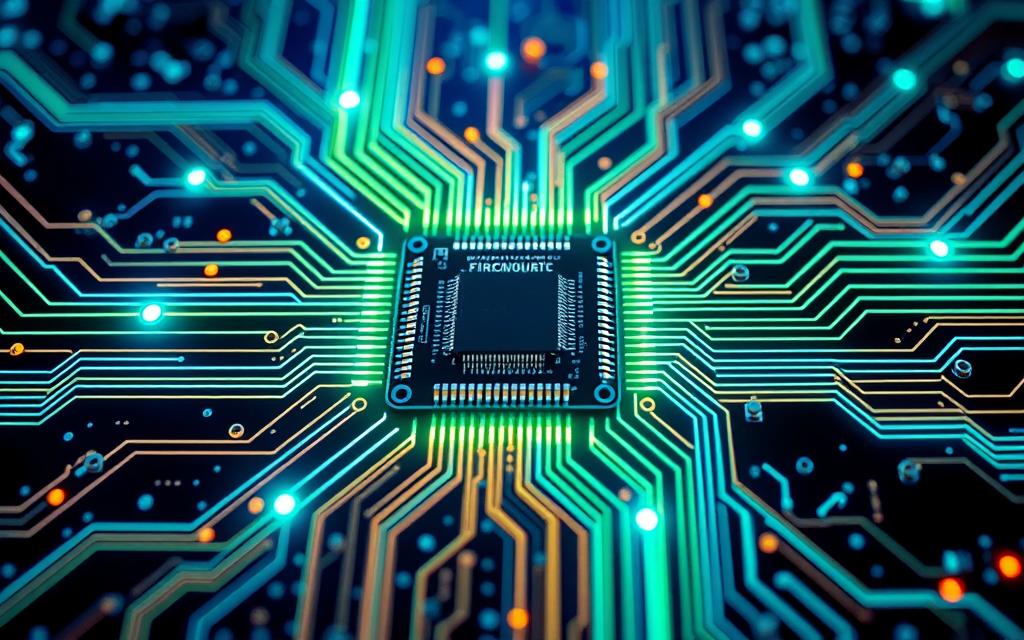
In summary, firmware does a lot in modern computing. It manages hardware and software, ensures device security, and keeps things compatible. As tech keeps getting better, firmware’s role will grow even more. It’s a critical part of our computing world.
Alternative System Management Approaches
Technology keeps getting better, making efficient system management more critical. Alternative system management techniques, like hypervisors and virtual machines, are key. They help use resources better, improve performance, and boost flexibility.
Hypervisors are now a top pick for managing many operating systems on one machine. They help cut down on hardware costs, make systems more reliable, and grow with your needs. Hypervisors also make managing complex systems easier by adding a layer between hardware and operating systems.
Benefits of Alternative System Management
- Improved system performance and efficiency
- Reduced complexity and increased flexibility
- Enhanced security and reliability
- Better utilization of resources and reduced costs
Container technologies are another way to manage systems. They wrap applications and their needs into one container. This makes deploying apps across different places easier. Containers are light and easy to move, cutting down on system complexity and boosting efficiency.
Comparison of System Management Approaches
| Approach | Benefits | Drawbacks |
|---|---|---|
| Hypervisors | Improved performance, reduced costs | Complexity, resource intensive |
| Container Technologies | Lightweight, portable, efficient | Security concerns, limited support |
In conclusion, methods like hypervisors and container technologies bring many benefits. They include better performance, less complexity, and more flexibility. Knowing the pros and cons helps organizations choose the best system management strategy. This leads to better efficiency and productivity.
The Future of Computing: Beyond Traditional Operating Systems
The future of computing is set for a big change. New technologies will change how we use computers. The old ways of using operating systems will fade, making room for new ideas.
Cloud computing, edge computing, and artificial intelligence will lead the way. These will make systems more flexible and smart. They will work better together, adapting to our needs.
Emerging technologies like AI and advanced security will be key. They will make our computers safer and more personal. The future of computing will bring new systems that are better for us.
Emerging Trends
- Increased adoption of edge computing for real-time applications
- Growing demand for seamless cross-platform compatibility
- Rise of AI-driven dynamic resource management in future operating systems
These trends will shape the future of computing. By embracing them, we can make computing better for everyone. The future of computing is exciting, and we have a big role to play.
Benefits and Drawbacks of OS-Free Computing
OS-free computing is a new way of using devices that’s getting a lot of attention. It offers benefits like better performance, less complexity, and more security. Without an operating system, devices can work faster and more efficiently.
But, there are also drawbacks. One big challenge is needing more skilled people to work together. Also, it might not work with all devices or apps, which could slow its growth.
Some of the main benefits and drawbacks of OS-free computing are:
- Improved performance and efficiency
- Reduced complexity and cost
- Increased security and reliability
- Limited compatibility with devices and applications
- Need for increased expertise and cooperation
As this technology grows, it’s important to think about its benefits and drawbacks. It could change how we use devices in many fields. With its promise of better performance and less hassle, OS-free computing might be a big change for the future.
In short, OS-free computing is an exciting new way to manage devices. It has benefits and drawbacks to consider. As it gets better, we need to look at its good and bad points to see if it’s right for different uses.
| Benefits | Drawbacks |
|---|---|
| Improved performance | Limited compatibility |
| Reduced complexity | Need for increased expertise |
| Increased security | Higher cost |
Practical Applications in Today’s World
Operating system-free computing has many practical applications across different sectors. It shines in industrial uses, like in manufacturing and automation. This method makes devices work better and more reliably, boosting productivity and cutting downtime.
It’s not just for industrial uses. It also fits well in consumer electronics and scientific research. For instance, traffic lights and microwaves use it for their tasks. In science, it helps in gathering and studying data from sensors and devices.
- Improved performance and efficiency
- Reduced complexity and cost
- Increased reliability and security
These advantages make OS-free computing appealing for many fields and uses.
| Industry | Application | Benefits |
|---|---|---|
| Manufacturing | Automation and control | Increased productivity and efficiency |
| Consumer Electronics | Device control and operation | Improved performance and reliability |
| Scientific Research | Data collection and analysis | Increased accuracy and precision |
Conclusion: Redefining Our Understanding of Computer Systems
As we conclude our journey into computing without traditional operating systems, a significant change in technology is evident. The emergence of OS-free computing is reshaping our view of computer systems. It brings new possibilities and challenges, from embedded devices to quantum computing.
OS-free computing offers advantages like better security and efficient use of resources. It also allows for custom solutions tailored to specific needs. Yet, it also presents challenges in direct hardware interaction. This mix of opportunities and hurdles has created a vibrant field where how we use digital devices is being redefined.
Looking ahead, it’s vital to grasp this conclusion and its opportunities. By reimagining computer systems, we can achieve better performance, flexibility, and user control. The future of computing depends on our ability to adapt, innovate, and challenge the norm. This will lead to a more dynamic and responsive digital world.
FAQ
What is the role of operating systems in modern computing?
Operating systems manage computer hardware and software. They act as a bridge between the two. They are key in modern computing, enabling systems to run smoothly.
How have operating systems evolved throughout the history of computing?
The history of computing has seen huge changes. From big machines for specific tasks to personal computers today. This progress helped create modern operating systems, shaping our computing world.
Do all computers require a traditional operating system?
No, not all computers need a traditional operating system. Embedded systems, for example, work without one. Modern computers also use bare metal programming, which has its own benefits and challenges.
What are the benefits and drawbacks of minimalist computing solutions?
Minimalist computing solutions can improve performance and reduce complexity. They make computers more efficient and reliable. But, they might limit functionality and compatibility.
How does bare metal programming work, and what are its practical applications?
Bare metal programming interacts directly with hardware, skipping the operating system. It can boost performance and simplify systems. Yet, it faces challenges like increased complexity and less portability.
What is the role of firmware in modern computing, and how does it interact with operating systems?
Firmware manages computer hardware and software. It includes BIOS and UEFI, which set up hardware during boot. Firmware and operating systems work together for smooth system operation.
What are the possible benefits and challenges of alternative system management approaches, such as hypervisors and virtual machines?
Approaches like hypervisors and virtual machines can improve performance and flexibility. They offer efficient and adaptable computing. But, they require expertise and cooperation to manage.
What are the key considerations when exploring the future of computing without traditional operating systems?
Exploring new operating systems and approaches is exciting. They bring opportunities and challenges. We need innovation and cooperation to fully benefit from these developments.
What are the practical applications of OS-free computing in today’s world?
OS-free computing is used in many fields, like industrial systems and consumer electronics. It offers better performance and reliability. This makes it valuable where traditional operating systems are not the best choice.





